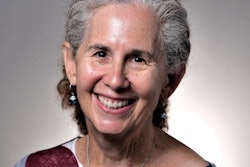
The SARS-CoV-2 pandemic stopped many dental practices and changed a lot of lives for several weeks to months.
Now that we are back, some of us are doing much better than we had done in the comparative past -- and some of us have scheduled fewer patients by choice. Regardless, we are happy to be back, doing what we do best: taking care of our patients (albeit covered in more layers of personal protective equipment [PPE]). Even though we are all expecting a flattening of our production curves in the upcoming months, due to the inactivity at the end of March and all of April and May for many of us, there are still some great things that happened along the way.
 Sheri B. Doniger, DDS.
Sheri B. Doniger, DDS.Although we always knew we were essential in terms of healthcare, it took a pandemic to amplify the statement. The world is aware that PPE and infection control are not new to dental practices, as we have been doing infection control for decades. Prices on level 3 masks are going down, and the masks may become more plentiful in the near future as manufacturers are focusing on them due to the high demand. We all have a nice supply of disinfectants, gloves, and barriers in case there is a shortage in the fall or winter. We are breathing a little easier (although through two masks) with our new air filtration systems. We are noticing all the smush (a technical term, you know) that is on our face shields and wondering why we didn't think about this (and surgical caps) before the pandemic.
Patients still mistakenly believe what they have is dental "insurance," similar to medical. Now that we are considered essential to healthcare, we may be able to change the narrative. However, until then, we still have a lot of educating to do regarding the difference between a benefit that has a small amount of money to defray dental expenses and almost full coverage of procedures.
Many of us decided that the pandemic was the point to turn away from being in network for dental plans. If you are able to do it, I would strongly recommend going this route. It is a little painful at first, but there was never a large exodus of patients after we terminated the one or two plans we participated in. Yes, some benefit companies are punitive if you are out of network and pay a smaller yearly maximum, but others pay almost the same. The bottom line is: If the patient needs dental care, the dental benefit company is not the diagnostician, determining need. We are.
So, if we have to deal with dental benefit companies, we need to change our conversation regarding the manner in which we receive reimbursement for our services after we receive the dental benefit portion. One of the best things we did for our practice was to limit the touch points for billing. Although we are not in network anywhere, we are still accepting assignment and payments, rather than having patient pay the entire amount upfront.
Now, once the payment is received, we contact patients to request they pay their remainder balance to eliminate billing. Patients are all on board with this. We rolled it out as part of our new COVID-19 precautions to eliminate the need for sending out billing statements, waiting for payments, sometimes rebilling, and waiting some more. Patients always have the option to split their remainder balance into portions. For those patients who have a dental benefit that pays the patient directly if you are not in network, we will charge their card two weeks after the services. Of course, if there is an extensive treatment plan, they have a finance payment plan agreement in place. This has decreased our monthly billing to being almost nonexistent. We are collecting 98% of our fees. Team time is directed to patient care, rather than billing. That's a win-win, and because we included it as a part of our new protocols, we have had little pushback.
Although I am a huge supporter of the U.S. Postal Service, and we do have hundreds of prestamped window billing statement envelopes, creating this financial policy saves team time and places the funds in our account. This is definitely a win for our practice. We are still a little old school because we mail out our claim forms (we have a large collection of commemorative stamps to use) and receive paper checks. I am OK with this, even though there are many who prefer the electronic transfer of claims and funds. This may not work for every office, but we have had success.
As COVID-19 gave us different ways to recreate our practices, minimizing billing, eliminating lag time to receive payments, and ensuring cash flow have been changes for the good. Patients consider this a benefit because they don't have to submit their forms, and we allow our team to work on other office needs. This is definitely something to consider as we move forward through this pandemic and beyond.
Sheri B. Doniger, DDS, practices clinical dentistry in Lincolnwood, IL. Her book, Practical Practice Solutions in Dentistry, is available on amazon.com. You can reach her at [email protected].
The comments and observations expressed herein do not necessarily reflect the opinions of DrBicuspid.com, nor should they be construed as an endorsement or admonishment of any particular idea, vendor, or organization.



















